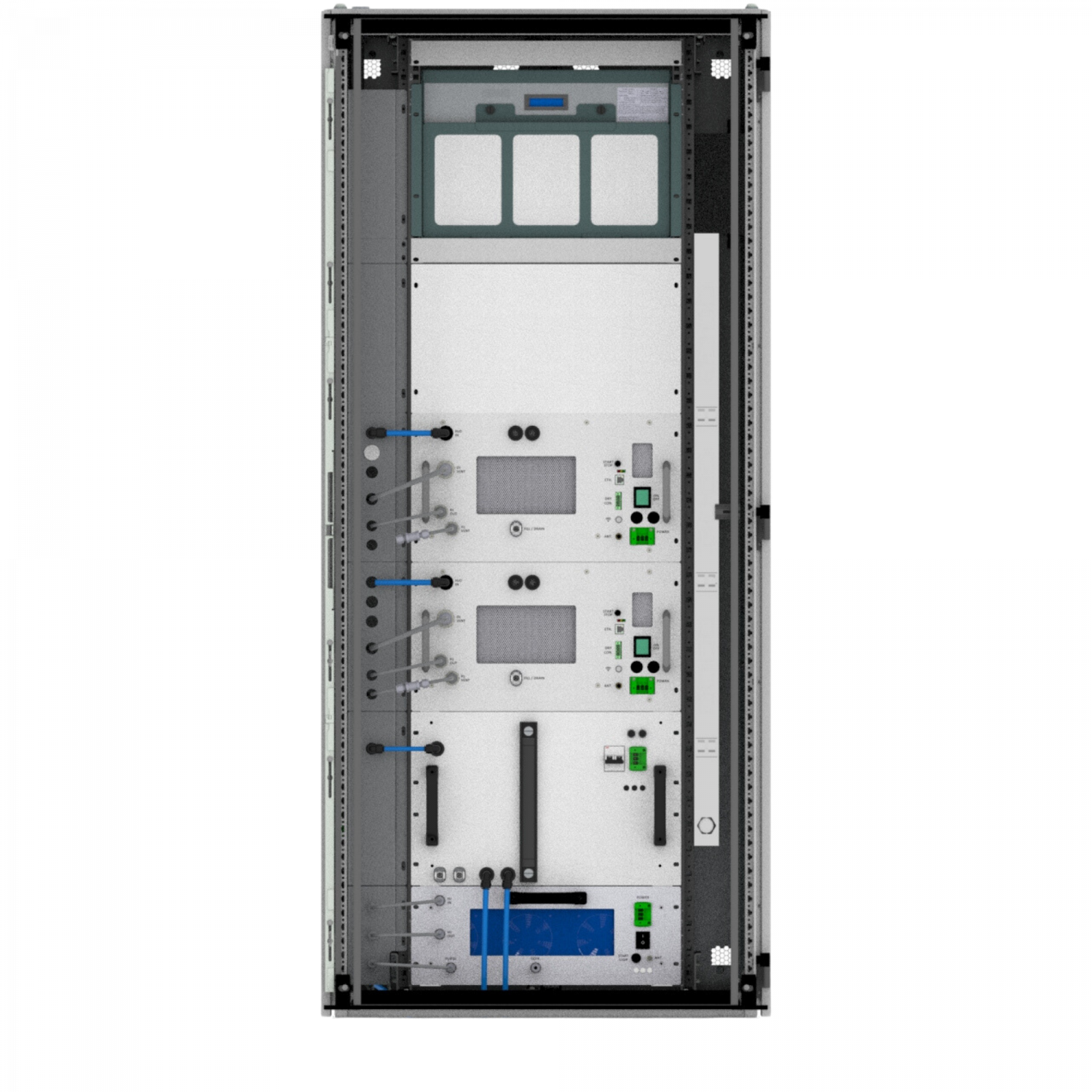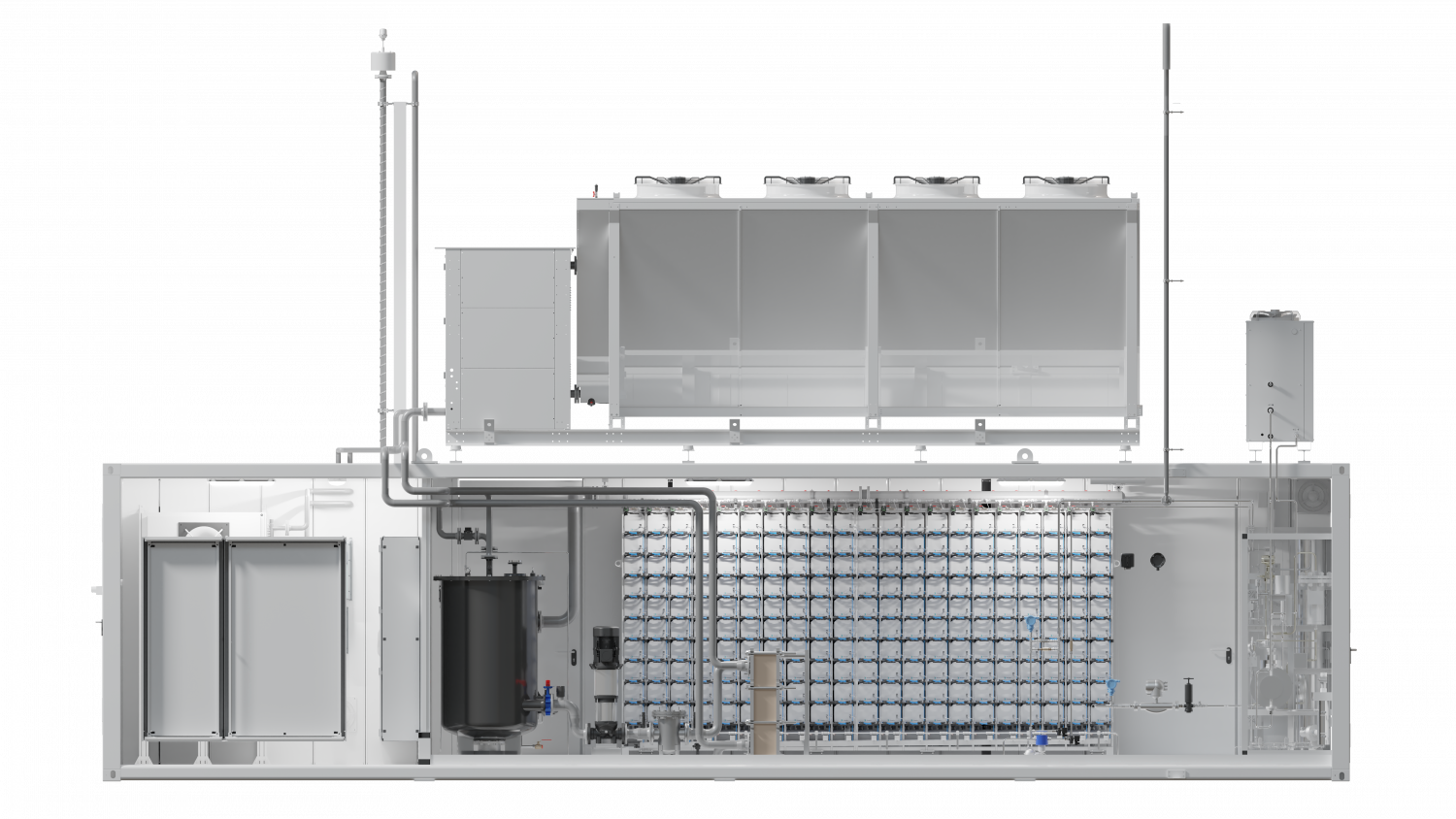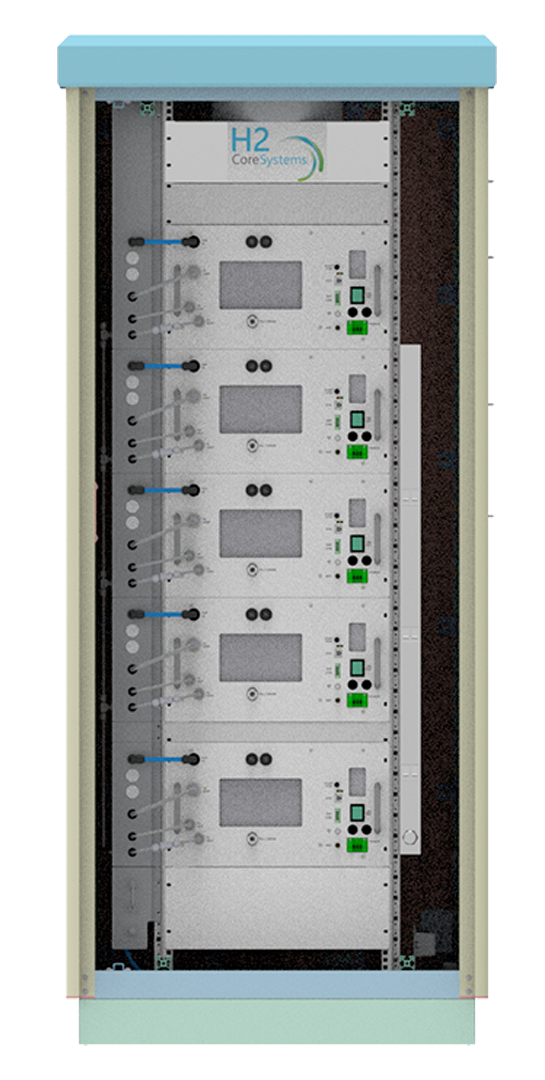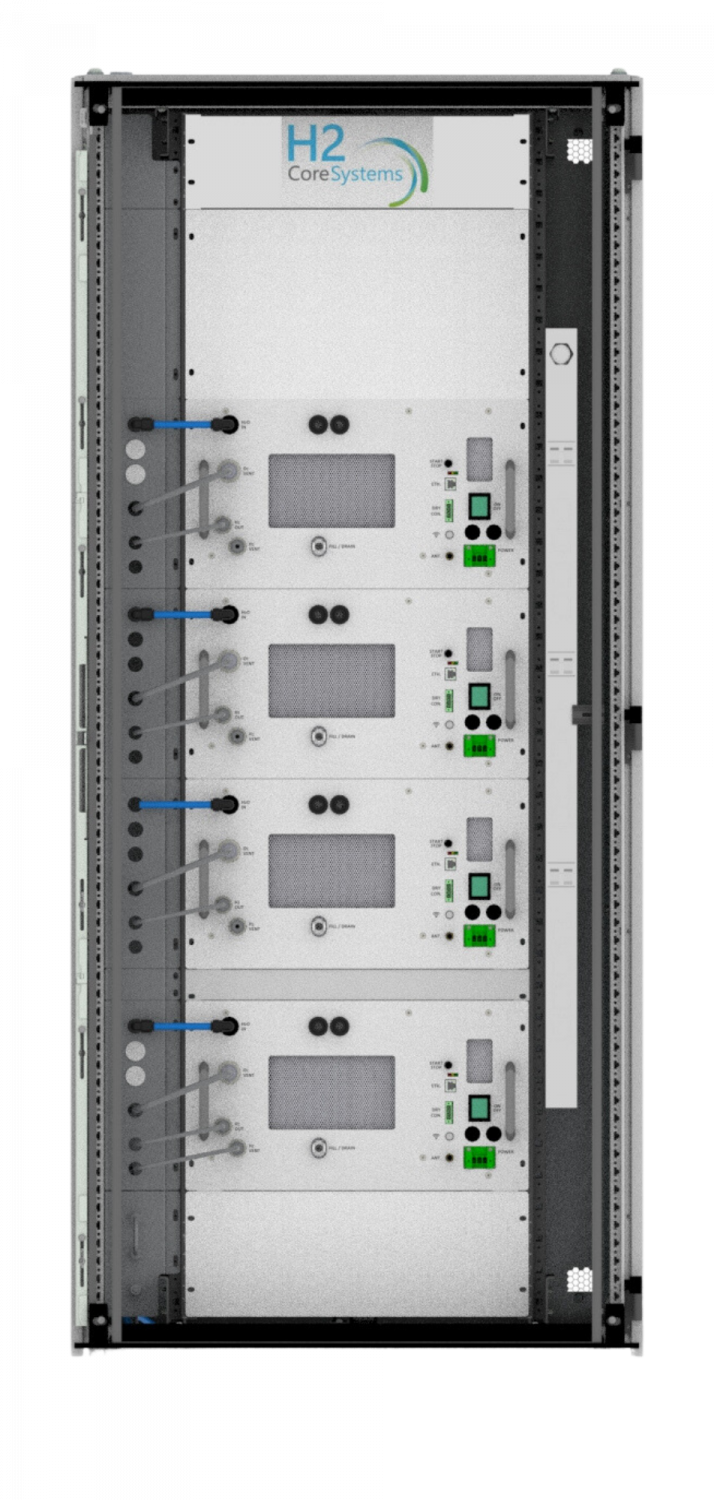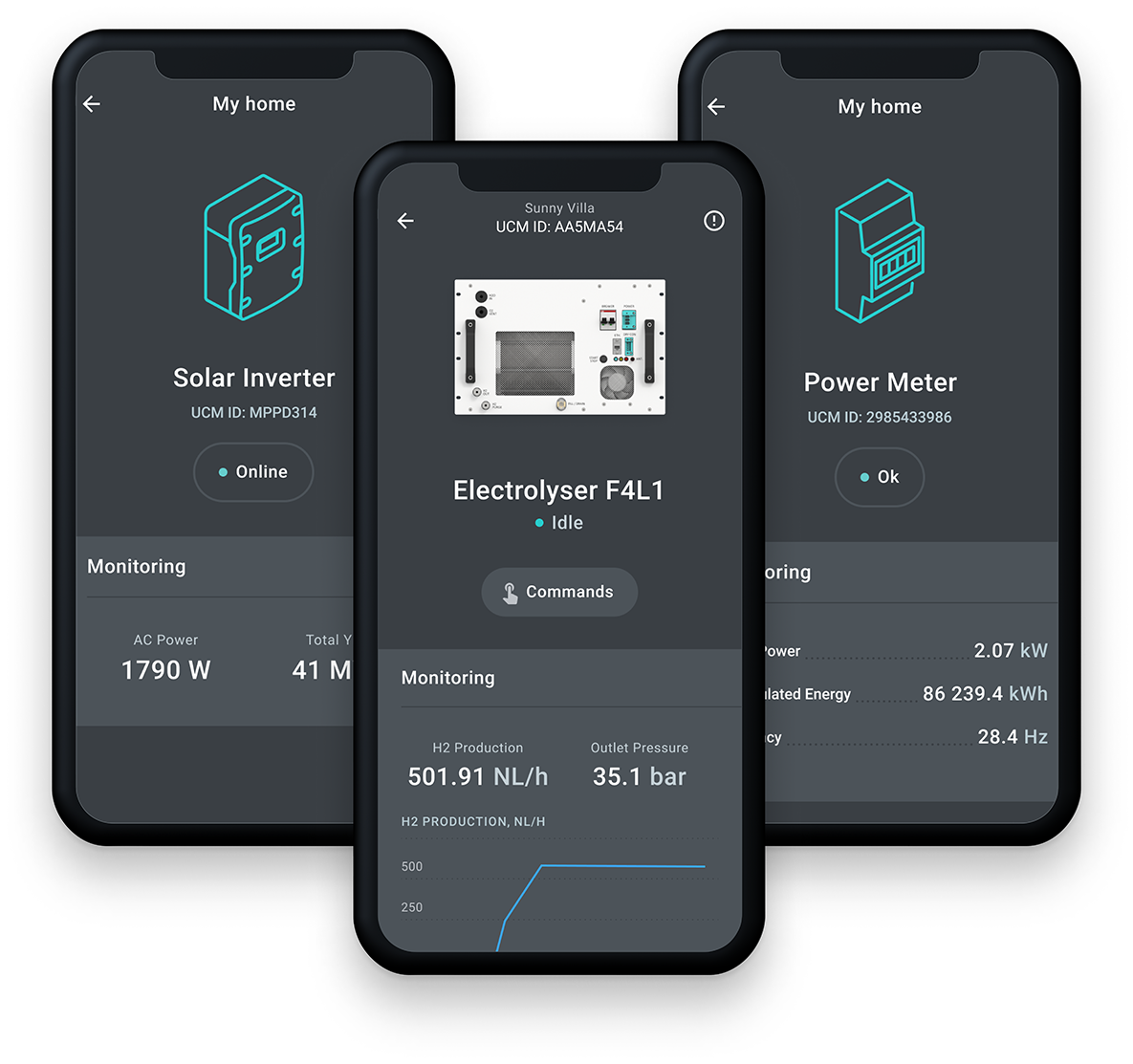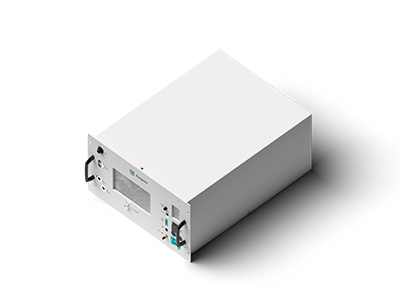
Enapter’s patented anion exchange membrane (AEM) electrolyser is a standardized, stackable and flexible system to produce on-site hydrogen.
The modular design – paired with advanced software integration – allows set up in minutes and remote control and management.
The modular, stackable electrolysers put you in control: Like solar panels, you can deploy single modules for smaller green hydrogen needs or reach megawatts of production capacity by combining many electrolysers.
What is Enapter’s AEM technology, and how does it work?
Enapter’s core product is the standardised and stackable anion exchange membrane (AEM) electrolyser. Electrolysers use electricity to split water (H2O) into hydrogen (H2) and oxygen (O2) through an electrochemical reaction. The stack is the electrolyser’s heart and comprises multiple cells connected in series in a bipolar design. Enapter’s unique technology is the design and operation of these cells, consisting of a membrane electrode assemble (MEA), made from a polymeric AEM and specially designed low-cost electrodes. The anodic half-cell is filled with dilute KOH (alkaline) electrolyte solution; the cathodic half-cell has no liquid and produces hydrogen from water permeating the membrane from the anodic half-cell. Oxygen is evolved from the anodic side and transported out from the stack through the circulating electrolyte. The hydrogen is produced under pressure (typically 35 barg) and already extremely dry and pure (about 99.9%). Using Enapter’s ancillary dryer module, hydrogen is delivered at 99.999% purity.
The modular design – paired with advanced software integration – allows set up in minutes and remote control and management. Stack this electrolyser to achieve the required hydrogen flowrate.
What is the difference between the Proton Exchange Membrane (PEM) technology and the Anion Exchange Membrane (AEM) technology, and what are the advantages of AEM?
Proton exchange membrane electrolysers (PEM) use a semipermeable membrane made from a solid polymer and designed to conduct protons. While PEM electrolysers provide flexibility, fast response time, and high current density, the widespread commercialisation remains a challenge primarily due to the cost of the materials required to achieve long lifetimes and performance. Specifically, the highly acidic and corrosive operating environment of the PEM electrolyser cells calls for expensive noble metal catalyst materials (iridium, platinum) and large amounts of costly titanium. This poses a challenge to the scalability of PEM electrolysers.
The anion exchange membrane electrolysers use a semipermeable membrane designed to conduct anions. They are a viable alternative to PEM with all the same strengths and several key advantages that lead to lower cost. Due to the less corrosive nature of the environment, steel can be used instead of titanium for the bipolar plates. Furthermore, AEM electrolysers can tolerate a lower degree of water purity, which reduces the input water system’s complexity and allows filtered rain and tap water.
The AEM stack module
The AEM stack module is the centerpiece of the product platform, minimum modular unit (MMU). It is equipped with the necessary sensorsto measure flow speeds, temperatures and pressures. This enables detailed and granular monitoring of the state of health of each stack, as well as optimization of overall system management to balance running times and schedule preemptive maintenance activities. Gas and water connectors are easilyaccessible at the front. Electric connectors are in the back.
Enapter Electrolyser EL4 (standard version)
- High efficiency
- Automated & remote operation with Enapters EMS
- Low requirements for input water purity
- Ideal for on-site hydrogen production
- Low maintenance requirements
- Safe operation
- Scalable and modular, add as many modules as needed
- Modules can be easily integrated in 19“ racks
- Quick and easy installation
- Small footprint thanks to compact design
Downloads
Specifications
Production rate:
Up to 500 NL/h, up to 1.0785 kg/24 h
Hydrogen output purity:
35 bar: ~ 99.9 % (Impurities: ~ 1000 ppm H₂O)
8 bar: > 7000 -9000 ppm H₂O) (TBD)
Output pressure:
Up to 35 bar
Nominal power consumption per Nm³ of H₂ produced:
4.8 kWh/Nm³, beginning of life ³ The Electrolyser belongs to S.E.P. category according to Pressure Equipment (Safety) Regulations 2016
Operative power consumption:
2.4 kW, beginning of life
Peak power consumption:
3 kW
Max heat dissipation:
800 W
Standby power consumption¹:
30 W ¹ Standby refers to the condition in which no hydrogen is being produced and the auxiliary components are not powered.
Power supply:
200 – 230 V(AC), 50/60 Hz
Maximum water input conductivity:
20 μS/cm at 25 °C
Water consumption:
~ 420 mL/h at 25 °C
Water input pressure range:
1 – 4 barg
Ambient operative temperature range:
5 °C – 45 °C
Ambient operative humidity range:
Up to 90% humidity, non-condensing
IP rating:
IP 20
Dimensions:
W: 482 mm x D: 635 mm x H: 266 mm
Weight:
42 kg
Space inside cabinet:
6 U
Control and monitoring:
Fully automatic with Enapter’s EMS via 2.4Ghz Wi-Fi and Bluetooth, Modbus TCP over Ethernet
Conformity:
CE mark according to the machine directive 2006/42/CE²
UKCA mark according to Supply Machinery (Safety) Regulations 2008³
² The Electrolyser belongs to S.E.P. category according to Pressure Equipment Directive 2014/68/EU
³ The Electrolyser belongs to S.E.P. category according to Pressure Equipment (Safety) Regulations 2016
Request for a quote
Send us a short message, if you are interested in this module and we’ll get back to you as soon as possible.















